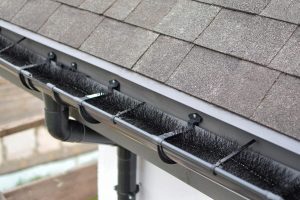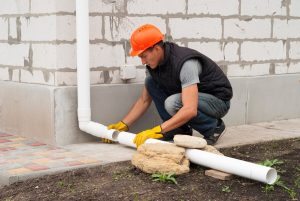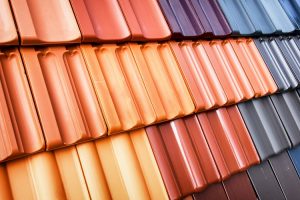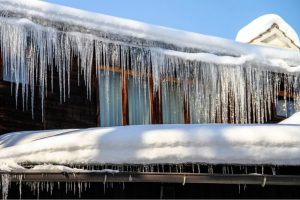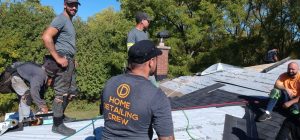What Are the Most Common Types of Flat Roofs?
Jul 13, 2023
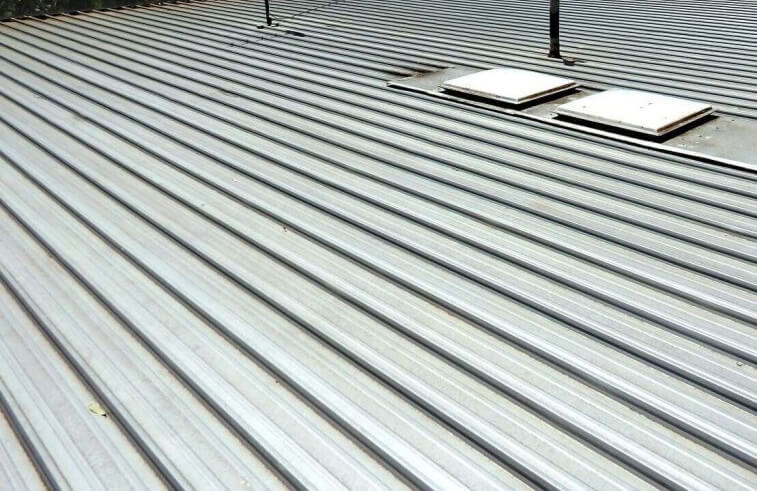
In the market of industrial and commercial roofing, there are many different things to consider when replacing your flat roof. It is important to know which types of flat roofs are most common and which may be the best suited for your property.
Whether it be choosing a new roof design or replacing/repairing a current flat roof, D’Angelo & Sons Roofing & Exteriors offers much of the information needed to make an informed decision about your investment.
Let’s review the most common types of flat roof materials available for your commercial or industrial building:
1. Built-Up Roofing (BUR)
Built-up roofing (BUR) is a traditional type of flat roof that is made from hot tar, asphalt and gravel. Built-up roofs are made up of alternating layers of bitumen (asphalt or tar) and reinforcing fabric sheets. The result provides a long-lasting, highly durable, waterproof membrane, enhancing the service life of your commercial or industrial flat roof.
Built-up roofs have been in use for over 100 years across North America. They have a proven track record and are arguably, the most common type of commercial or industrial flat roof available today. Part of their popularity comes from the long lifespan and durability of a built-up roof. A well-installed and properly maintained built-up roof can last upwards of 25 years. Furthermore, built-up roofs perform well due to their durability and water-resistance, even withstanding the harshest of Canadian winters.
2. EPDM (Rubber Membrane)
Ethylene Propylene Diene Monomer (EPDM) is another common type of flat roof for commercial or industrial buildings. When people refer to rubber roofs, they are generally referring to EPDM. EPDM roofs are made from a synthetic rubber created from a combination of ethylene propylene and diene. As well, these roofs are typically carbon black to prevent UV degradation. They can be installed fully adhered, mechanically fastened, or ballasted. They are highly flexible and quite durable at the same time.
EPDM roofing is a common option within the market today as they are both easy to install and maintain, and can withstand damage, especially from sunlight. If your commercial or industrial building is situated within a warm climate, opting for an EPDM roof may be ideal. Although EPDM roofs can accommodate various building designs and structures, they are most commonly utilized for low slope buildings.
3. Modified Bitumen
Modified Bitumen roofs are a common type of roof designed for flat or low-sloped buildings. They are an improvement of the built-up roofing system and have been in use since the 1960s. Similar to built-up roofs, modified bitumen is installed in multiple layers (usually two-ply or three-ply) to ensure watertightness. Modified bitumen can be installed through a variety of methods including cold applied, heat-welded, self-adhered, mechanically fastened, and hot-applied.
In the commercial and industrial flat roof industry, there are two types of modified bitumen membrane to consider:
(1) Atactic Polypropylene (APP)
Atactic Polypropylene, otherwise known as APP, is made up of a thermoplastic polymer and is usually applied using a propane-fueled torch. APP certainly has its advantages. Compared to other roofing materials, APP-modified bitumen is both inexpensive and flexible. Thanks to its durability and low price point, APP remains a great option for most commercial and industrial flat roof building owners.
(2) Styrene Butadiene Styrene (SBS)
Styrene Butadiene Styrene, or SBS, is a long-lasting membrane when blended with bitumen. This is what gives commercial or industrial flat roofs their rubber-like appearance. Its rubber composition makes SBS less prone to cracking and can even withstand tough elements such as harsh winter weather and extreme heat damage from the sun. SBS can be installed using a variety of methods including cold-applied, heat-welded, self-adhered, mechanically fastened, or hot application methods. However, the most common option for installation is through heat-welding, or cold application.
4. Thermoplastic Membranes (PVC or TPO)
Polyvinyl Chloride (PVC) or Thermoplastic Polyolefin (TPO) roofing are two flat roof options that are single-layered and made from light-coloured material that is either white or gray. PVC and TPO roofs can be adhered just as an EPDM rubber roof would be. They can also be mechanically attached using screws and plates.
Both PVC and TPO roofing systems are becoming increasingly popular options for commercial and industrial building owners. One reason for this is that PVC and TPO roofs are made up of highly reflective materials that can reduce energy demand as well as monthly heating (with insulation) and cooling costs. In addition, the vinyl used in PVC materials can be recycled into new products long after their service life.
Learn More
As discussed, the most common types of commercial and industrial flat roofs include built-up roofing, EPDM, modified bitumen, and thermoplastic membrane.
Education is a key factor in choosing a type of flat roof that fits your budget, style, and location. Regardless of the type of flat roof selected, D’Angelo & Sons Roofing & Exteriors is here to help with any of your flat roofing needs. Call us today for your free estimate!
